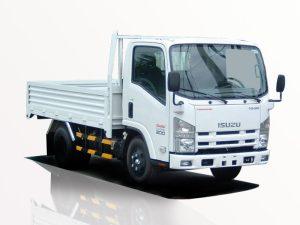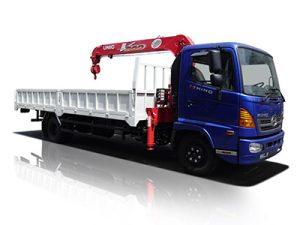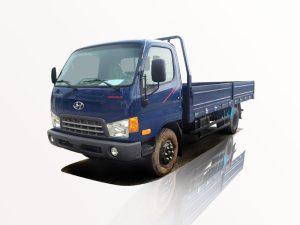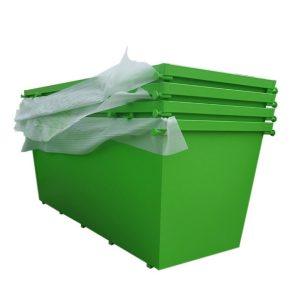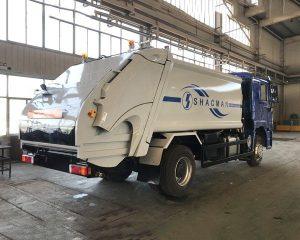Monday to Saturday - 8:00 -17:30
What Are Cherry Pickers? A Comprehensive Guide
Introduction
Cherry pickers, also known as aerial work platforms or elevating work platforms, are essential tools used in various industries for accessing heights safely and efficiently. These machines are characterized by their ability to lift personnel and equipment to elevated work areas, facilitating tasks such as construction, maintenance, and repairs. This article delves deep into what cherry pickers are, their types, uses, safety considerations, and practical tips for selecting the right cherry picker for your needs.
1. Understanding Cherry Pickers
A cherry picker is a mechanical device designed to lift individuals and materials to high places. They are widely used due to their versatility and safety features. Here’s a closer look at their structure and functionality.
1.1 The Anatomy of a Cherry Picker
Cherry pickers consist of several key components:
- Base: The foundation that provides stability.
- Boom: The extending arm that reaches upwards.
- Platform/Basket: The area where employees stand while elevated.
- Control System: The mechanism for operating the machine.
1.2 How Cherry Pickers Work
The operator drives the cherry picker to the desired location and uses the control system to extend the boom. This system often incorporates hydraulic systems or electric motors to enable smooth lifting and lowering of the platform.
2. Types of Cherry Pickers
Cherry pickers come in various forms, each designed for specific applications and environments. Understanding these types helps determine which cherry picker best suits your needs.
2.1 Towable Cherry Pickers
Towable cherry pickers are portable, lightweight models that can be towed by vehicles. They are ideal for quick jobs and can be set up easily.
2.2 Self-Propelled Cherry Pickers
These cherry pickers have their own power source, enabling them to move without towing. Self-propelled models offer greater flexibility and control on-site.
2.3 Truck-Mounted Cherry Pickers
Mounted on a truck chassis, these cherry pickers are best suited for outdoor jobs, such as tree trimming or streetlight maintenance, as they are portable and can navigate various terrains.
2.4 Vertical Mast Lifts
Vertical mast lifts feature a compact design that allows them to be easily maneuvered into tight spaces. They are primarily used indoors for tasks such as electrical work and inventory management.
3. Applications of Cherry Pickers
Cherry pickers have numerous applications across various industries. Understanding where and how to use them effectively can enhance productivity and safety.
3.1 Construction and Building Maintenance
Cherry pickers are crucial in construction for tasks such as installing windows, repairing roofs, and painting high surfaces.
3.2 Tree Trimming and Forestry
In forestry, cherry pickers make it easier to access tree tops safely for trimming and maintenance, reducing the risk of accidents.
3.3 Electrical and Lighting Work
Electricians utilize cherry pickers for installing and repairing overhead lighting and electrical lines.
3.4 Warehouse and Inventory Management
In warehouses, cherry pickers help staff access high shelves, streamlining inventory management and logistics.
4. Safety Considerations When Using Cherry Pickers
While cherry pickers enhance safety when working at heights, operators must follow strict guidelines to avoid accidents.
4.1 Training and Certification
Only trained personnel should operate cherry pickers. Many regions require certification for operators, ensuring they understand machine functions and safety protocols.
4.2 Equipment Inspection
Regular inspections before use are essential to ensure all parts are functioning correctly. Check for hydraulic leaks, worn-out cables, and other potential issues.
4.3 Personal Protective Equipment (PPE)
Operators must wear appropriate PPE, including hard hats, safety harnesses, and non-slip footwear, to minimize the risk of injury.
4.4 Weather Conditions
Always assess weather conditions before operating cherry pickers. High winds and rain can create hazards, making it unsafe to operate.
5. Tips for Choosing the Right Cherry Picker
Selecting the right cherry picker for your project can impact efficiency and safety. Here are some key considerations:
5.1 Assess Job Requirements
Evaluate the height needed, weight of materials, and job type to determine the best cherry picker specifications.
5.2 Consider Mobility and Terrain
If the project requires maneuvering through tight spaces or rough terrain, choose a cherry picker designed for those conditions.
5.3 Evaluate Power Source
Consider whether you need a gas- or electric-powered cherry picker based on your work environment and duration of use.
5.4 Check Safety Features
Look for cherry pickers equipped with safety features such as emergency stop buttons, automatic leveling systems, and non-slip surfaces.
6. Practical Examples of Cherry Picker Usage
Let’s explore some real-world scenarios where cherry pickers have played a vital role.
6.1 Utility Maintenance
Utility companies often use cherry pickers for servicing power lines. For instance, a team may use a truck-mounted cherry picker to access overhead lines that need repair during a storm.
6.2 Film and Photography
In the film industry, cherry pickers are often utilized to achieve high vantage points for filming. A director might use a cherry picker to capture aerial shots that wouldn’t be possible from the ground.
6.3 Event Setup
For outdoor events such as concerts or festivals, event planners use cherry pickers to hang banners or lights at considerable heights, ensuring visibility and safety.
7. Frequently Asked Questions (FAQ)
7.1 What is the maximum height that cherry pickers can reach?
The maximum height varies by model, but cherry pickers can typically reach heights between 30 to 200 feet.
7.2 How do I choose a cherry picker for my project?
Consider factors such as the height needed, weight capacity, power source, and the terrain of your worksite.
7.3 Are cherry pickers safe to operate?
Yes, cherry pickers are designed for safety, but they must be operated by trained personnel and used following safety guidelines.
7.4 Can cherry pickers be used indoors?
Yes, specific models, such as vertical mast lifts, are designed for indoor use, making them ideal for tight spaces.
7.5 What maintenance is required for cherry pickers?
Regular inspections, hydraulic system checks, and maintenance of electrical components are essential to keep cherry pickers in good working condition.
7.6 Where can I rent cherry pickers?
Cherry pickers can be rented from equipment rental companies, which often provide various models suitable for different applications.
Conclusion
Cherry pickers are invaluable tools that improve safety and efficiency in various industries. Understanding their types, uses, and safety features can enhance your operations, enabling you to work at heights with confidence. By considering the tips provided, you can select the right cherry picker for your specific needs, ensuring a successful project whether on a construction site, in tree maintenance, or during indoor tasks.


